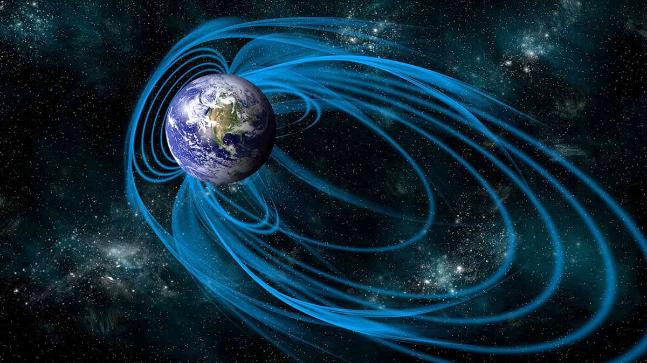Earth’s Magnetic Pole Shift and Its Impact on Space Weather

The Earth’s magnetic field is a vital shield that protects our planet from harmful solar winds and cosmic radiation. Recent research has revealed that the north magnetic pole’s drift from Canada to Siberia has significant implications for the behavior of charged particles in the Earth’s magnetosphere. This shift affects the penetration altitudes of these particles, which include electrons, protons, and ions. Understanding these changes is crucial for predicting space weather and safeguarding satellite systems.
The Drift of the North Magnetic Pole
The north magnetic pole has been moving for over a century. Until 1990, it was located in Canada. However, by 2020, it had drifted toward Siberia at an astonishing rate of about 50 kilometers per year. This movement may seem minor, but it has profound effects on how charged particles behave in space. The Earth’s magnetic field, generated by its core, acts as a protective barrier. It guides compasses and shields us from solar radiation. As the north magnetic pole shifts, the strength and shape of the magnetic field also change.
These changes influence the paths of charged particles in the magnetosphere, particularly in a region known as the radiation belts. Here, energetic particles like protons and electrons are held captive by the magnetic field. Their movement is affected by the magnetic field’s strength and configuration. Scientists have been keen to understand how the north magnetic pole’s movement alters the trajectories of these particles.
Research Findings from the Indian Institute of Geomagnetism
Researchers at the Indian Institute of Geomagnetism have conducted simulations to study the impact of the north magnetic pole’s drift on charged particles. They used three-dimensional relativistic test particle models based on the International Geomagnetic Reference Field (IGRF-13). Their goal was to quantify changes in the altitudes of energetic protons over time.
The study, led by Ms. Ayushi Srivastava, Dr. Bharati Kakad, and Dr. Amar Kakad, revealed that in 1900, particles in the Canadian region, where the magnetic field was stronger, tended to remain at higher altitudes. However, by 2020, the situation had changed dramatically. As the north magnetic pole shifted toward Siberia, the magnetic field in Canada weakened, while the field in Siberia became stronger.
This shift prevented particles over Siberian longitudes from penetrating deeper into the Earth’s atmosphere. The study found that the lowest altitudes these particles could reach increased by as much as 400 to 1200 kilometers over Siberia. The stronger magnetic field gradients in this region interacted with the ambient magnetic field, altering the trajectories of charged particles and deflecting them outward.
Implications for Space Weather and Satellite Operations
The variations in the geomagnetic field have real-world implications, particularly for satellites in polar orbits. These satellites pass through regions where charged particles are influenced by the magnetic field. As a result, they can experience varying levels of drag, which is a resistive force caused by changes in atmospheric density. This density change occurs due to the heating caused by collisions between high-energy particles and atmospheric particles.
The energy deposited by these charged particles can also heat the atmosphere, altering its density and affecting satellite paths. Understanding these dynamics is essential for satellite operators. It allows them to anticipate changes in satellite behavior and make necessary adjustments to maintain their orbits.
Observer Voice is the one stop site for National, International news, Sports, Editor’s Choice, Art/culture contents, Quotes and much more. We also cover historical contents. Historical contents includes World History, Indian History, and what happened today. The website also covers Entertainment across the India and World.
Follow Us on Twitter, Instagram, Facebook, & LinkedIn

